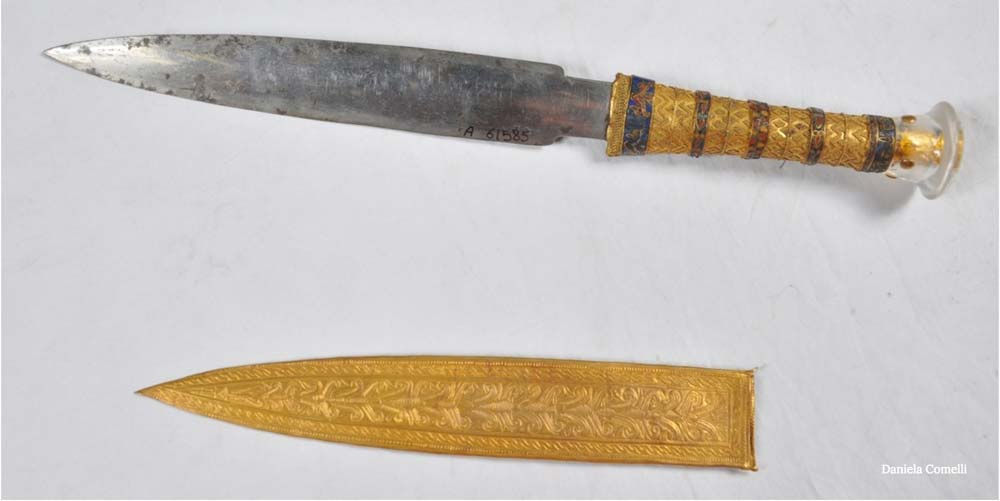Here’s some fodder for those of you who believe that aliens constructed the pyramids…
A new study says that King Tutankhamun, famed Egyptian boy king, was buried with a blade of meteoric origin. Using X-ray fluorescence spectrometry, a team of researchers from Milan Polytechnic, Pisa University, and the Egyptian Museum in Cairo, confirmed that the iron in the dagger, which had been placed on King Tut’s right thigh, contains a high percentage of nickel (11 percent, as compared to a normal 4 percent in iron ore) and traces of cobalt—distinguishing features of meteoric iron.
“The nickel and cobalt ratio in the dagger blade is consistent with that of iron meteorites that have preserved the primitive chondritic ratio during planetary differentiation in the early solar system,” said main author Daniela Comelli of the Department of Physics of Milan Polytechnic.
Howard Carter, who had discovered King Tut’s tomb in 1922, had initially described the weapon as a “highly ornamented gold dagger with crystal knob.” The blade features a decorative gold handle, and its sheath, also made of gold, is adorned with a floral pattern on one side and a feathered pattern on the other.

Researchers have investigated the possible source of the blade, taking into consideration all meteorites found within a 2,000 km radius of the Red Sea.
“Only one, named Kharga, turned out to have nickel and cobalt contents which are possibly consistent with the composition of the blade,” Comelli added. Kharga had been found in 2000 at Mersa Matruh, a seaport 150 miles west of Alexandria.
The blade isn’t the only space-based object in King Tut’s tomb. The young king’s pectoral (or necklace) features an amulet scarab made from Libyan Desert silica glass—produced by the impact of a meteorite or comet on sand.
Further, the most recent Egyptian iron artifacts that had been discovered (nine small beads excavated along the west bank of the Nile tomb in Gerzeh) were also made from meteoritic iron. The trend indicates that the ancient Egyptians placed great value on the material, perhaps interpreting its cosmic origin as a divine message.
Researchers published their results in the journal, Meteoritics and Planetary Science. The dagger is currently being displayed at the Egyptian Museum in Cairo.

You be the judge.
Filed Under: Aerospace + defense




